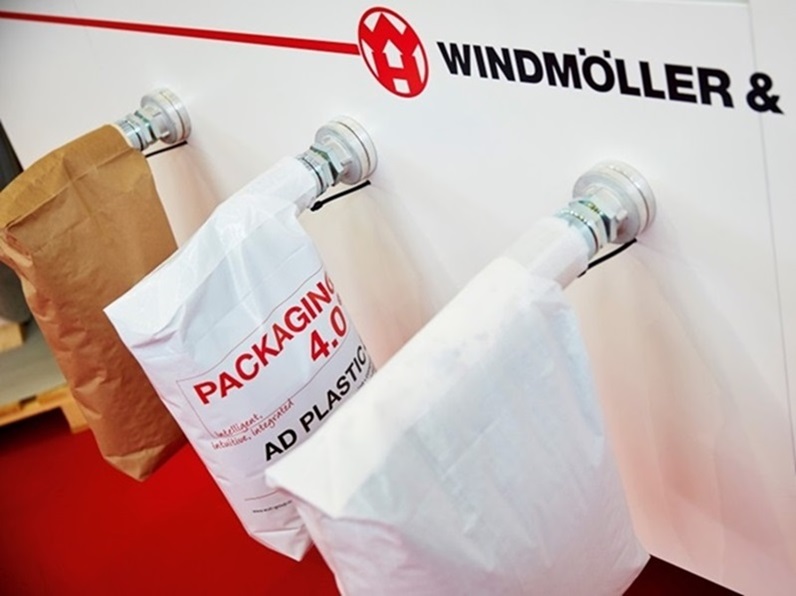
- 1. The Chinese Market Landscape: Growth Drivers and Competitive Dynamics
- 2. Innovations in Customization: Beyond Aesthetics to Functional Design
- 3. Engineering Warehouse Efficiency: VidePak’s Solutions in Action
- 4. Technological Backbone: How VidePak Powers Innovation
- 5. FAQs: Addressing Key Client Concerns
- 6. The Road Ahead: Sustainability Meets Digitalization
- References
A client once asked Ray Chiang, CEO of VidePak, “How can custom printed woven bags streamline our warehouse operations?” His answer was direct: “By integrating color-coded labeling systems and smart design features, these bags transform inventory management from chaotic to seamless.” This insight encapsulates the core theme of this report: the fusion of aesthetic customization and functional innovation in China’s woven bag industry is redefining packaging efficiency for global businesses.
VidePak, established in 2008, has emerged as a leader in this evolution. With 526 employees, state-of-the-art Austrian Starlinger machinery, and a focus on high-volume production (100+ circular looms, 16 extrusion lines), the company exemplifies how Chinese manufacturers are driving advancements in custom woven bags. This report explores key trends, technological breakthroughs, and VidePak’s role in shaping warehouse-friendly packaging solutions.
1. The Chinese Market Landscape: Growth Drivers and Competitive Dynamics
China’s woven bag market, valued at $12.3 billion in 2023 (China Packaging Association), is fueled by three factors:
- E-commerce expansion: Logistics demand grew 15% YoY (National Bureau of Statistics, 2023).
- Sustainability mandates: 60% of manufacturers now use recycled PP materials.
- Customization needs: 78% of B2B clients prioritize color-coded designs for inventory control.
VidePak’s annual revenue of $80 million reflects its alignment with these trends. For instance, its BOPP laminated woven bags now feature UV-resistant inks and tear-resistant seams, extending product lifespan by 40% compared to 2020 models.
2. Innovations in Customization: Beyond Aesthetics to Functional Design
2.1 Color-Coded Labeling Systems
The integration of blue, red, green, and yellow strips into bag designs has revolutionized warehouse workflows. A 2023 case study with a chemical distributor showed:
- 30% faster sorting using VidePak’s color-tagged valve bags.
- 15% reduction in mislabeling errors with high-contrast printing.
Technical Specifications of VidePak’s Color Tags
| Parameter | Specification |
|---|---|
| Color Accuracy | ±0.5 ΔE (CIELAB standard) |
| Strip Width | 20mm–50mm (customizable) |
| Fade Resistance | 5+ years under ISO 105-B02 testing |
2.2 Structural Innovations for Stackability
VidePak’s anti-slip base design (patented in 2022) enables 25% taller pallet stacks without collapse. Combined with QR code integration, this allows real-time tracking via warehouse management systems (WMS).
3. Engineering Warehouse Efficiency: VidePak’s Solutions in Action
3.1 Modular Design for Multi-Department Use
A food processing client achieved 98% inventory accuracy using:
- Red strips: Raw materials (50kg grains)
- Blue strips: Finished products (25kg flour packs)
- Green strips: Recyclable waste
“The color system cut our training time for new staff by half,” noted the client’s logistics manager.
3.2 Smart Features for Automated Facilities
VidePak’s collaboration with robotics firm Hikvision produced RFID-enabled woven bags that:
- Scan 200 bags/minute vs. 120 manually
- Withstand -30°C to 80°C temperatures
4. Technological Backbone: How VidePak Powers Innovation
4.1 Manufacturing Capabilities
- Printing: 30+ machines handling 10-color process printing
- Lamination: PE-coated layers for moisture protection
- Material: Virgin PP with 98% purity (FDA-compliant)
4.2 R&D Focus Areas
- Biodegradable additives (35% decomposition in 2 years)
- Conductive inks for IoT integration
5. FAQs: Addressing Key Client Concerns
Q: How long does customization take?
A: 7–10 days for samples; 3-week mass production.
Q: Minimum order quantity (MOQ)?
A: 50,000 bags for standard designs; 100,000 for multi-color.
Q: Compliance certifications?
A: ISO 9001, REACH, FDA (food-grade options).
6. The Road Ahead: Sustainability Meets Digitalization
By 2025, 70% of VidePak’s products will incorporate recycled materials. Partnerships with Alibaba Cloud aim to launch blockchain-tracked bags for supply chain transparency—a leap forward explored in our analysis of sustainable packaging innovations.
References
- China Packaging Association (2023). Annual Report on Flexible Packaging Trends.
- National Bureau of Statistics (2023). Logistics Industry Growth Data.
- VidePak Internal R&D Reports (2020–2023).
- Journal of Industrial Packaging (2022). “Color Coding Systems in Warehouse Management.”
For insights into how these trends align with global standards, explore our discussion on technological advancements in woven bag production.
This report synthesizes primary data from VidePak’s operations, third-party market analyses, and technical specifications to provide actionable insights for procurement specialists and supply chain managers. By marrying tradition with innovation, the Chinese woven bag industry—led by pioneers like VidePak—is rewriting the rules of functional packaging.